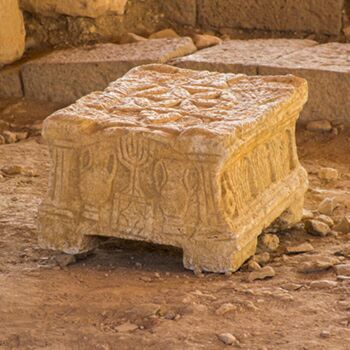Archaeology: See the Bible Come to Life
Hands-on archaeology is one of the highlights of any trip to Israel. Over the last century, archaeological discoveries have revealed artifacts that shine a light on our most sacred texts, helping to bring both the Old and New Testaments to life. Dig into the biblical landscape to find direct references to King David and to visit the world of Abraham and the sages.
Israel is home to thousands of archaeological sites, including remnants from the prehistoric and biblical eras, the Roman, Byzantine, and Crusader periods, and through the Ottoman era to modern Israel.
All of these are amazing glimpses into history, but here are a few of our favourites:
The Temple Mount
The Temple Mount, also known as Mount Moriah, is the traditional location of the binding of Isaac. It was the site of Solomon’s Temple, the Second Temple reconstructed by King Herod, the 1,300-year-old Al-Aqsa Mosque and Dome of the Rock, and is considered one of the world’s holiest sites by Jews, Muslims, and Christians alike. Today, visitors can see pillars from the Second Temple era, the reconstructed gates, and of course, the Western Wall, one of the remaining retaining walls built by King Herod.
City of David & Hezekiah’s Tunnels
The City of David was the foundation of Jerusalem’s earliest settlement and the palaces of the kings of the House of David. Archaeologists have found coins commemorating the Jewish kings alongside carved seals of dignitaries serving the Kings of Judea. See these ancient wonders, and then take a stroll through Hezekiah’s tunnel, the water source built by King Hezekiah to prepare the city for impending siege.
Western Wall Tunnels & Southern Wall Excavations
What makes this archaeological park stand out is the immersive picture it creates of life during the Second Temple period. See the steps that Jesus and his contemporaries would have climbed and the arches they would have passed through to get to the Temple Mount. With streets, shops, aqueducts, and mikvaot – ritual baths – still intact, you can live a day in the life of a Jewish pilgrim to the Second Temple.
Magdala
Migdal, or Magdala, is considered to be the hometown of Mary Magdalene – Miriam of Magdala – and a place where Jesus preached. The site of the oldest synagogue discovered in the Galilee and one of the oldest in the country, Magdala is also the home of the Magdala stone, which includes depictions of the Temple and Temple artifacts by an artist who lived early enough to have seen them in person.
Caesarea Maritima
This 2,000-year-old port city built by King Herod the Great became the capital of Judea after the Roman destruction of Jerusalem. According to the Book of Acts, both Saint Peter and Saint Paul passed through. Today, you can walk through the remains of a Roman-era port city, including a plaque dedicated by Pontius Pilate, while enjoying the sea breezes off the sparkling Mediterranean.
Tel Dan
This nature reserve and archaeological park includes the remains of a biblical town mentioned in Isaiah, Judges, and Joshua. It later became one of the headquarters of Jeroboam, the first ruler of the Kingdom of Israel that split from Judea and Jerusalem. It is also the site of one of the most significant finds of biblical archaeology: one of only three inscriptions in the world directly referencing to king David.
Masada
According to the first-century historian Josephus Flavius, Masada was the site of the famous final showdown of the Jewish Revolt against the Romans. The inspiring tale of the weak against the strong, along with the site’s extensive ruins, make Masada one of Israel’s most popular attractions.


